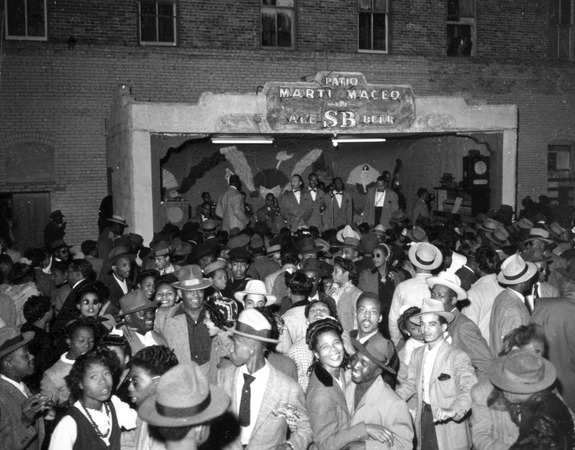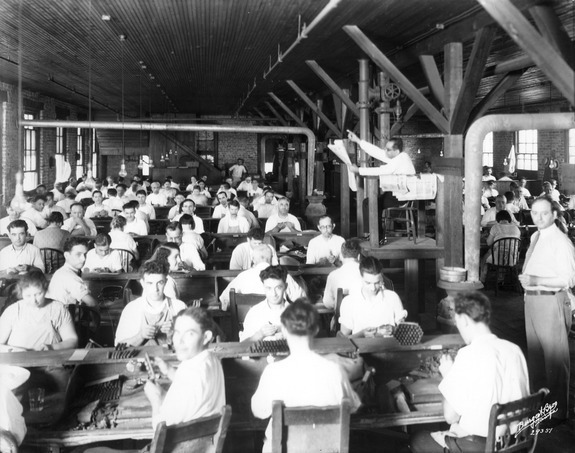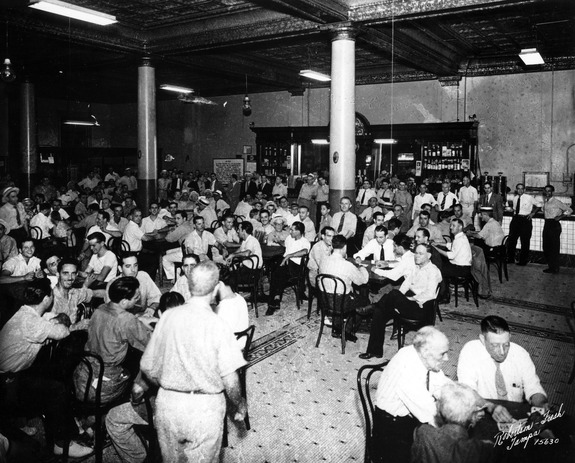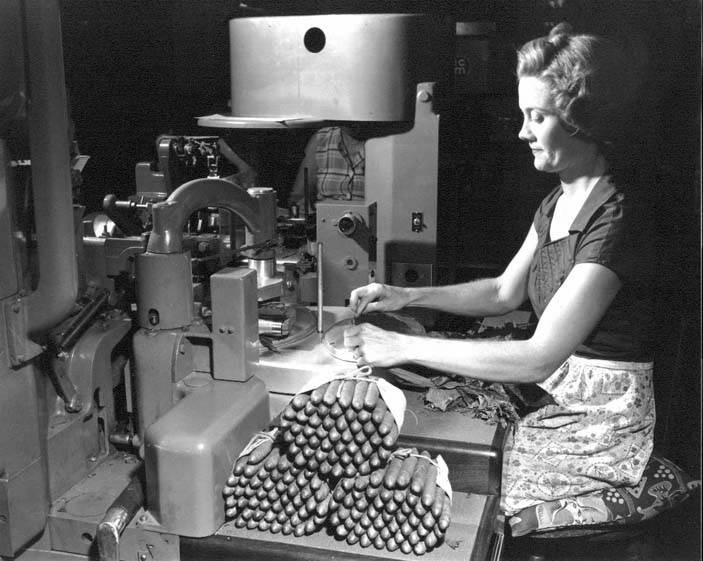By Sheila Cowley
. . .
A Public Art Project
Celebrating Diversity
and Immigration via Audio
. . .
Online and in
Centennial Park
Details here
. . .
Ybor Speaks is the first public art audio project commissioned by the City of Tampa. In the fall of 2019, the city commissioned me, my husband Matt Cowley and writer Paul Wilborn to create a public audio installation celebrating immigration and diversity in Tampa’s historic Ybor City neighborhood. [Disclaimer – I’m the Managing Editor of this magazine.]
Paul came up with the framework – recording selections from books and memoirs written by Ybor City residents and historians, creating fictional audio vignettes where the same characters live in different time periods and as time passes their families grow more and more diverse, soundscapes inspired those pivotal time periods, and a series of public talks on Ybor City’s vibrant history.

The focus was hearing the voices of Ybor – Spanish, Italian, English – and in the beginning Yiddish, Rumanian and Russian. It’s accessible public art – available anywhere and to residents with visual impairments, and captioned for deaf and hearing-impaired audiences.
I served as the researcher and writer, worked with our voice actors and edited recordings. Sound designer Matt created atmospheric soundscapes and vivid sonic backgrounds for the fictional vignettes. Paul worked things out with the authors of the books we featured, and with their families when writers had passed away, as sadly happened just before we were able to record the much-loved Ybor author, Jack Espinosa.
Paul explains, “In choosing the books, we really looked for a cross-section that included true historians like Gary Mormino, and memoirs of life in Ybor by wonderful storytellers like Ferdie Pacheco and Jack Espinosa. Most of the books were nonfiction, but we did include a section from my fictional short story collection about Ybor in the ’80s, Cigar City.”
I read Ybor books and made a million notes. We got ready to record and made plans to visit Menorah Manor to record Yiddish speakers.
Then the pandemic hit.
We got an extension on the deadline. Then another.

As audio producers, we mostly record actors in our simple home studio. Faced with a massive project under lockdown, we wound up using voice actors for the book selections who had their own home studios or could borrow our mic and be coached by Matt on recording themselves.
And I spent the next year and a half gathering recordings from Spanish-speaking friends in their backyard, from a Rumanian music professor’s family and Russian speakers via email, hiring an actor in Italy over the internet, working with actors from Tampa’s Spanish Lyric Theatre over the phone in a rented studio with isolation booths, recording TheatreUSF students and professors over Zoom, and toward the end, after vaccinations, back at our house one or two at a time.
The audio vignettes were the hardest writing I’ve done – each had to be historically accurate in every detail, but still a lively story with humor and some poignant moments.
I managed to get the scripts written and rewritten, and workshopped over Zoom. And recorded, thanks to so many talented actors, the wonderful director Jim Rayfield, TheatreUSF professors Fanni Green and Dora Arreola, and many kind friends sharing their talents, including Beth Gelman beautifully singing Yiddish lullabies.

The audio editing was a complex mosaic with dozens of voices layered into every moment, as our characters were in the midst of a thriving and vital community.
We needed music to bring it all together, and fortunately, Paul knows the much-loved band La Lucha well. We commissioned bassist Alejandro Arenas, pianist John C. O’Leary III and drummer Mark Feinman to compose original music for the project. They brought in several wonderful guest players – Ona Kirei, James Suggs and Austin Vickrey.
La Lucha even mixed the music so the 1920s composition sounds like a 1920s record, and the WWII version sounds like a big band album.
The time periods we focused on are. . .
The 1890s
In the 1890s everybody was from somewhere else and Ybor was an oasis for Jewish families from eastern Europe. People pooled their resources to create social clubs that provided residents with friendship and community, language lessons, music, opera, dancing – and affordable health care.
Most new residents arrived from Spain and Cuba, so even shopkeepers from Romania and Russia spoke Spanish. Our fictional characters are a recent immigrant from Spain driving a streetcar, and a woman just arrived from Cuba, looking for work as crowds rally around Black activist Paulina Pedroso, fighting for Cuban independence.
In the soundscape, we hear voices in Spanish, Russian, Rumanian, English and Italian as Ybor City welcomes immigrants from all over the world. Mosquitos and frogs, the new streetcar and horses passing by – and construction of the city-in-progress.
La Lucha’s 1890s Pasodoble features voice and guitar in an intimate setting (Ona Kirei and Alejandro Arenas)
The 1920s
In the 1920s the high-end cigar business was booming and the neighborhood were thriving, the Italian community was growing and kids born in America were growing up. You didn’t need a car then because vendors brought fresh vegetables, fish and groceries to your home – even the drugstore delivered, and streetcars went everywhere.
Fresh Cuban bread arrived warm every morning, slapped onto a nail beside your front door. Our characters are a young man who’s the first in his family to go to college – thanks to his dad finding work as a bootlegger – but he’d rather be an artist, and a woman whose family owns a shop on bustling 7th Ave.
In the soundscape, we hear voices in Spanish, Italian, Yiddish, Rumanian and English as the city grows. Street vendors hawk their wares. The streetcar rolls by. Horses compete with early autos for the roadway. We hear music from Cuba and jazz age America.
La Lucha’s 1920s composition has a Cuban feel featuring clarinet, tres, piano, bass and percussion (La Lucha + Austin Vickrey).
WWII
During WWII the nearby shipyards ran 24-hours a day and stores and clubs and movie theatres on 7th Avenue were packed with soldiers on their way to war. Ybor’s many baseball teams played to crowds of loyal fans.
Our characters are a soldier with one day in Ybor, hiding his Italian heritage during the war. A woman welding battleships winds up welcoming him to her family’s very Ybor table, and a baseball game.
With World War II underway, we hear the work at the nearby shipyards, military planes from MacDill and local airbases and vintage cars rolling by. Residents ask for news on sons and brothers, a father writes a bilingual letter to his son while soldiers enjoy a night’s fun before shipping out. Dance music on the radio and the PA announcer from an Ybor City baseball game.
The 1940s Big Band still has a Spanish flare, but with a swing feel and a little nod to Duke Ellington on the piano (La Lucha + James Suggs and Austin Vickrey).
Urban Renewal
In the 1950s-‘60s Ybor languished after the cigarette industry stole much of the cigar business. Longtime residents moved to the suburbs, or were displaced as streets were ripped apart and families and friends divided as the I-4 highway cut across the neighborhood.
Our characters don’t want to leave, but their street is being ripped up. A gang of former neighbors come to shout at the bulldozers, and help them move.
In the soundscape, we hear construction sounds as urban renewal is in full force, reshaping the neighborhood – a musique concrète-style composition. Voices in Spanish echo what was, and we learn about the Jewish businesses that helped define the city.
The poignant 1960s a capella song is sung and arranged by Ona Kirei.
The 1980s
In the 1980s, artists moved into Ybor’s affordable abandoned buildings, and creatives like Paul Wilborn threw wild artistic celebrations like the much-missed Artists and Writers Ball and what turned into Tampa’s Guavaween.
Our characters are a young woman about to move in above an Ybor storefront, and a young gay man hiding his identity in suburban Palma Ceia – fighting Gasparilla pirate traffic on their way to the Artists and Writers Ball. After two Spanish-speaking policewomen shoo them in the right direction – we hear the voices of young Ybor now, speaking English, Spanish, Vietnamese and Kazakh.
In the soundscape, we hear the quiet streets of run-down Ybor in the ‘80s. The Gasparilla Night Parade takes over in full force with marching bands and pirates, while the Artists and Writers Ball attracts street poets and musicians, and rowdy crowds. As the night ends Ybor is quiet again.
“The 1980s music is the product of La Lucha with a Flock Of Seagulls hairstyle going out to party with Duran Duran.”

The City of Tampa Public Art Project Coordinator Melissa Davies and Manager of Arts & Cultural Affairs Robin Nigh suggested turning our audio selections into YouTube videos, with historical photos of Ybor. Photography curator Robin O’Dell shared her skills, exploring many local archives.
And a few months ago, I found myself writing the text for the permanent metal signs now installed at Centennial Park – with the wonderful live sound effects of Ybor’s modern trolley passing, and the constant crowing of multicolored roosters.
You can hear the Ybor Speaks soundscapes in Centennial Park at the top of the hour from 7 am to 5 pm every day but Saturday, when there’s a farmer’s market.
The soundscapes, fictional vignettes and audiobook selections are available for free on the City of Tampa’s website. You can find all the many gifted artists who participated in this project on that page, along with details on the books that inspired Ybor Speaks.
. . .
tampa.gov/art-and-cultural-affairs/ybor-speaks




